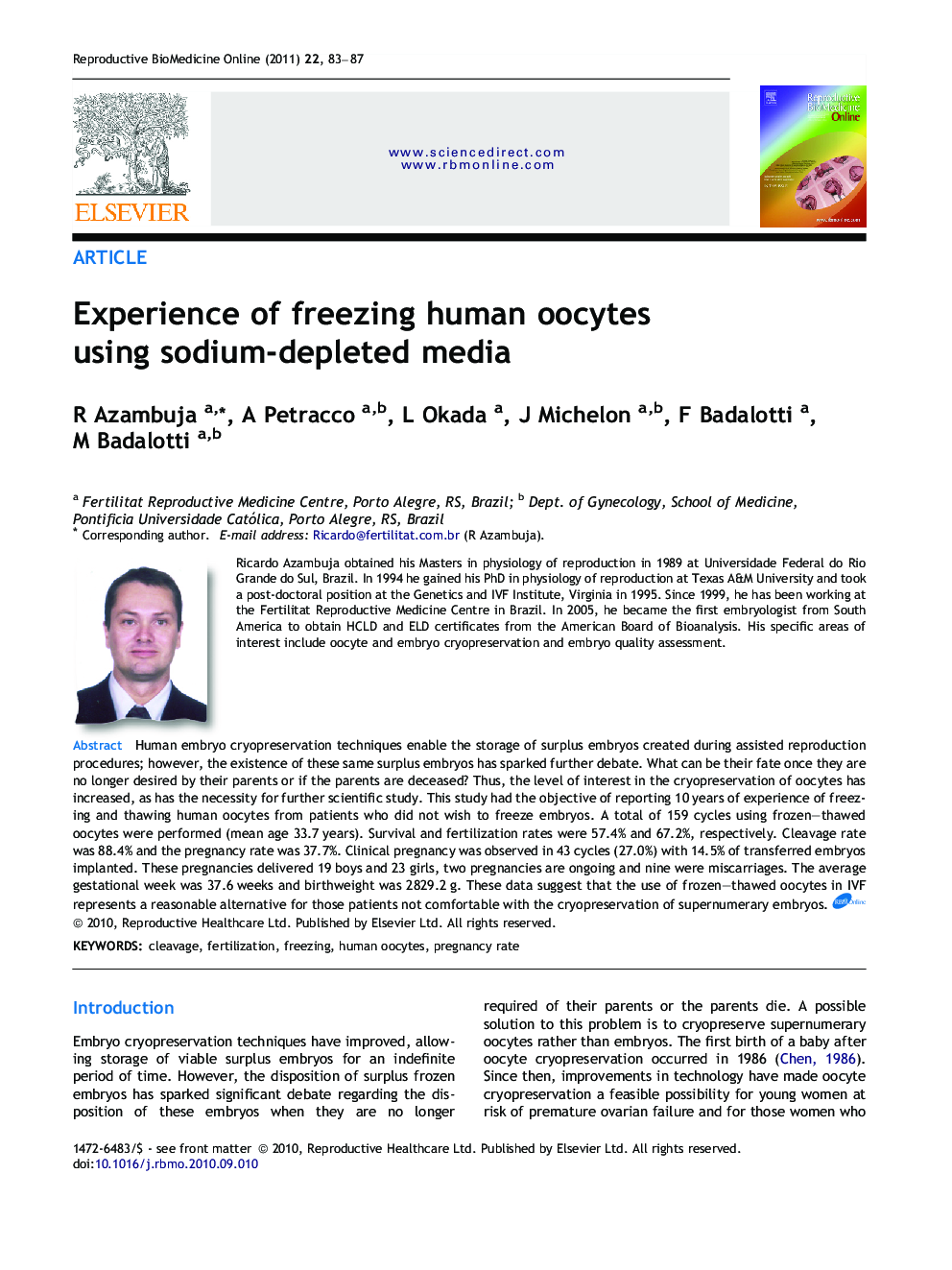| Article ID | Journal | Published Year | Pages | File Type |
|---|---|---|---|---|
| 3971814 | Reproductive BioMedicine Online | 2011 | 5 Pages |
Human embryo cryopreservation techniques enable the storage of surplus embryos created during assisted reproduction procedures; however, the existence of these same surplus embryos has sparked further debate. What can be their fate once they are no longer desired by their parents or if the parents are deceased? Thus, the level of interest in the cryopreservation of oocytes has increased, as has the necessity for further scientific study. This study had the objective of reporting 10 years of experience of freezing and thawing human oocytes from patients who did not wish to freeze embryos. A total of 159 cycles using frozen–thawed oocytes were performed (mean age 33.7 years). Survival and fertilization rates were 57.4% and 67.2%, respectively. Cleavage rate was 88.4% and the pregnancy rate was 37.7%. Clinical pregnancy was observed in 43 cycles (27.0%) with 14.5% of transferred embryos implanted. These pregnancies delivered 19 boys and 23 girls, two pregnancies are ongoing and nine were miscarriages. The average gestational week was 37.6 weeks and birthweight was 2829.2 g. These data suggest that the use of frozen–thawed oocytes in IVF represents a reasonable alternative for those patients not comfortable with the cryopreservation of supernumerary embryos.Embryo cryopreservation techniques have improved, allowing storage of viable surplus embryos for an indefinite period of time. However, the disposition of surplus frozen embryos has sparked significant debate regarding the disposition of these embryos when they are no longer required by their parents or the parents die. A possible solution to this problem is to cryopreserve supernumerary oocytes rather than embryos. The first birth of a baby after oocyte cryopreservation occurred in 1986. Since then, improvements in technology have made oocyte cryopreservation a feasible possibility for young women at risk for premature ovarian failure and for those women who require radiotherapy or chemotherapy for cancer, among other indications. This paper is a report of our IVF experience using cryopreserved oocytes over a 10-year period including survival, fertilization, cleavage and pregnancy rates, and the outcome of the pregnancies that resulted in the delivery of live-born children.
